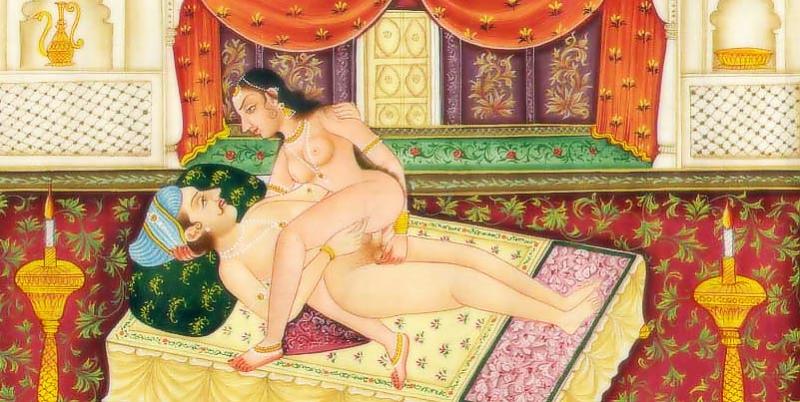
Kama Sutra is a famous text from ancient India which deals with life in a relationship. The work was written by Mallanga Vatsyana, probably around 200 AD. However, the author himself acknowledges that he has merely compiled the book from other, more ancient sources.
A common misconception relating to this book is that it is focused only on the art of making love. In reality this topic is dealt with only in one out of seven chapters. In fact, only a part of this specific chapter is devoted to the topic that has gained fame to the whole work, the love-making positions. The rest of the chapter deals with love-making at a more general level.
Another common misconception about Kama Sutra is that it is a work of Tantra. This is not true with the exception of a few, almost imperceptible references. Although Vatsyana himself is said to have been a tantric master and teacher, Kama Sutra does not contain any tantric secrets but deals with the couple relationship and sexuality at a down-to-earth and practical level. The false conceptions about Kama Sutra's tantric nature is due to ignorance. The essence of Tantra is to use erotic energies in a spiritual way to expand consciousness. Thus, although Tantra is of Indian origin, not all Indian literature on sexuality can be considered to be Tantra. The same is, of course, true of modern writings about sexuality.
Vatsyana's purpose was probably to break some of the contemporary taboos related to sexuality, and to encourage a healthier, more active and open relationship to sexuality among the aristocracy. In retrospect, as we compare Kama Sutra to later Indian works on sexuality, such as Ananga Ranga from the middle ages, we can say that the India of Vatsyana's time was rather free in its attitudes to sexual interaction.
Kama Sutra is thus not a piece of tantric literature. However, it is definitely a spiritual work, and it is firmly integrated in the framework of Hindu religion and philosophy. In fact, Kama Sutra is one of the most famous religious works in the world, and it has been translated to almost all languages and it is known everywhere.
The words kama sutra are Sanskrit (the ancient language of India) and refer to a sutra (a written work in the form of aphorisms, a guide) that focuses on kama (desire, pleasure).
The work is connected to the teachings of ancient Indian tradition about the purposes of human life, or purusharta.
The four most important purusharta-s are: dharma (virtous life), artha (wealth), kama, and moksha (liberation from illusion). In practice, Vatsyana writes mainly about the first three purusharta-s, moksha being primarily for the sannyasin, that is, a goal for spiritual aspirants who are on the path of renounciation. Dharma, artha and kama can be achieved in ordinary life and they are generally listed according to their importance, kama being mentioned as the last one.
